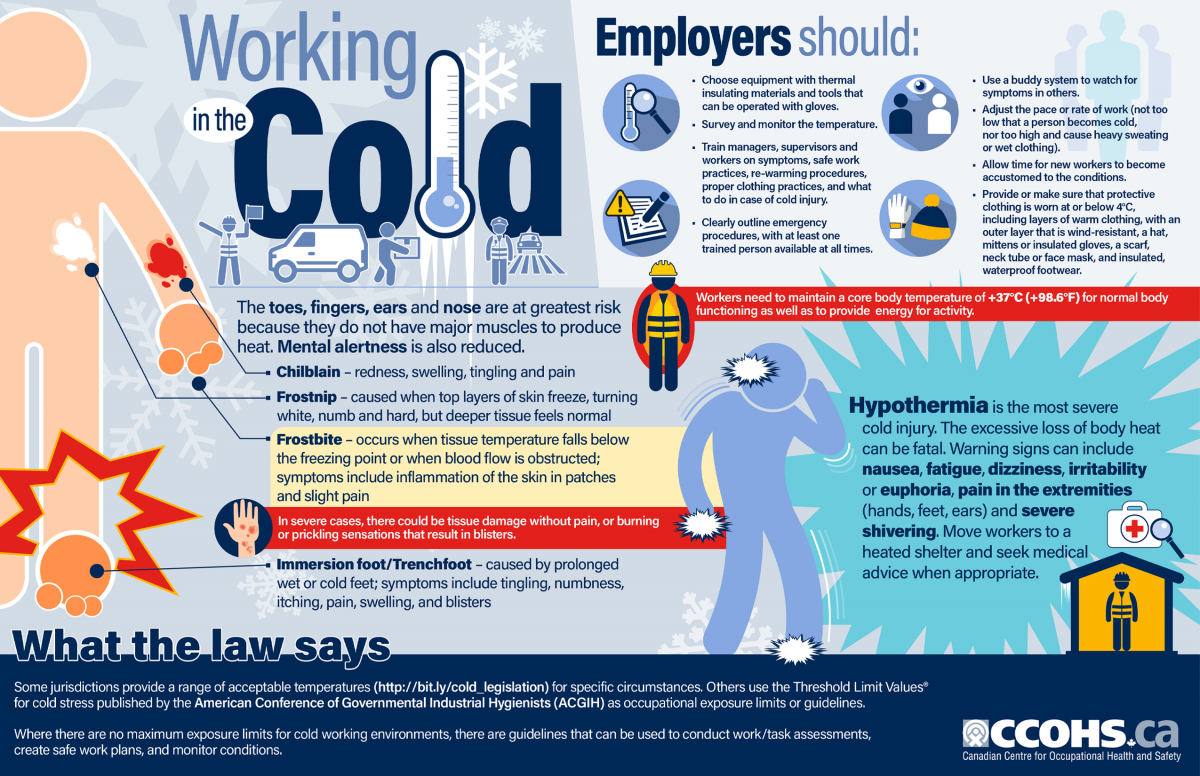
Construction can be a dangerous job any time of the year, but when the snow, ice and frigid temperatures of winter arrive, so does a season of hazards and frustrations. Here are some tips for keeping your jobsite safe and efficient during these cold, grueling months.
Educate Your Team
When autumn arrives, take time to educate your supers, laborers and other staff on winter safety basics. Slips and falls are the most common winter construction injury, so be sure your teams are clear on proper footwear, vigilance and reporting of slippery surfaces, as well as your expectations for snow and ice removal.
Stairs, doorways, scaffolding and walkways must be cleared before any work begins for the day. Those shoveling should always bend at the knee and keep their backs straight to avoid injury and any electrical equipment used needs to be grounded to prevent electrocution. When removing snow and icicles from rooftops and other high areas, rope off a parameter to keep those working on the ground safe.
Frostbite is another commonly reported injury, along with hypothermia and trenchfoot, a non-freezing injury caused by prolonged exposure to cold, damp conditions. Remind workers to always have a backup pair of gloves and a change of clean, dry clothes with them. Supers should walk jobsites each morning to ensure that everyone is taking the proper measures to limit their exposure to the elements.
Just make sure they aren’t too bundled up — falls and injuries can occur as a result of limited mobility due to protective winter clothing. Also, a warm cup of coffee on a raw winter morning may seem essential to getting through an early morning or late-night shift, but caution against too much caffeine, which can speed up heart rates and create a false source of warmth.
It’s also important for your employees to be aware of the first sign that they or one of their peers are in trouble. Tingling or a lack of feeling and skin discoloration are early indicators of frostbite, while changes in speech and confusion are common in those experiencing hypothermia. If a team member is exhibiting any of these symptoms, that person should stop working immediately and be taken to a warm, dry place, or in more serious cases, the hospital. OSHA’s cold stress card is a helpful reference guide to combat and prevent sickness or injuries related to cold weather.
Plan Ahead
Strategic planning is critical in winter months. Some projects, such as roofing, are not as easily completed as in other seasons, so schedule these activities thoughtfully. Keep your eye on the forecast so any exterior work can be completed during the warmest time of the day, reserving status meetings and interior jobs for colder times. If temperatures will be at or below zero during the workweek, consider closing your jobsite and making up the time during warmer weekend days to avoid injury and costly project delays.
“Caution should be taken when the temperature is at or below 10 degrees,” says Brian Stevens, safety consultant at Contractors Risk Management, a leading construction safety firm in New England. “Working in these conditions greatly increases the risk of frostbite and other injuries to employees.”
If your exterior work can’t be put off, arrange for heated enclosures and designated warming stations. For example, you can provide multiple warming trailers and even make sure port-o-johns are heated to ensure the safety and comforts of workers. To avoid injury and fires, it’s important to ensure that all stations are properly ventilated and free of open flames.
Before the first snowflakes hit the ground, each jobsite should be stocked with snow and ice removal tools such as shovels, ground heaters and ice melt. When a storm is expected, be sure to touch base with your staffing agency so each site has enough employees for both snow removal and regular project work. These items, along with heating sites and snowplowing, should be included when budgeting for winter projects.
Communication is one of the most important factors to a safe and efficient winter season. When inclement weather hits, it’s important to have a clear communication plan in place so workers, trade partners and clients can be kept up to date about site closures and schedule changes.
The weather is harsh and the schedules are tight, but, the jobsites also can remain safe, active and efficient during the hazardous winter months with the proper education, planning and communication. When you are faced with an incoming storm or subzero temperatures, prioritize the safety of your teams and trade partners and use your best judgment.
Marc Ciaramitaro is the vice president of field operations at Windover Construction, a full-service construction management firm in New England specializing in residential, commercial and institutional projects.





